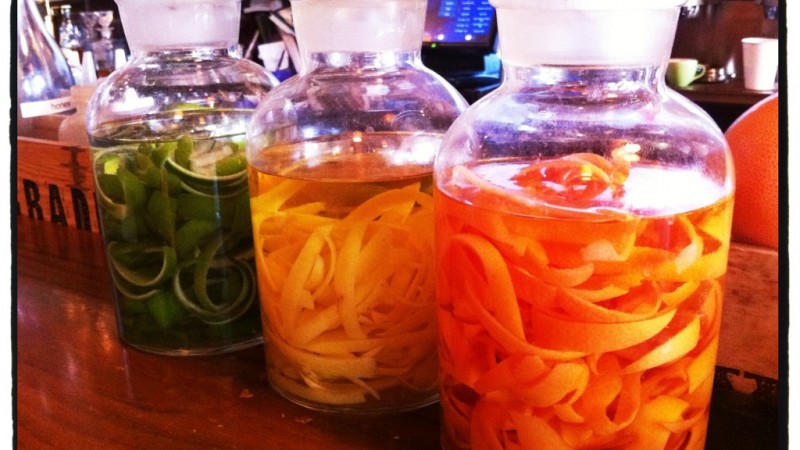I am often asked to review and revise cocktail lists for my clients when their sales are down. Often, their antiquated recipes are pedestrian, don’t use fresh ingredients or are simply out of balance. There is, however, another factor that is often overlooked and can directly translate to the death of a cocktail… its name.
A deliciously beautiful forest green cocktail will never get ordered if named: Swamp Thing, Frog Slime or Dr. Maniacal’s Corrosively Poisonous Potion. Here are some simple rules to keep in mind when naming a cocktail:
1) BE ORIGINAL- As a general rule, don’t add the letters –tini, –rita or –politan to the end of your names. Chocolatinis, Rosearitas or Pepperpolitans are boring names that don’t promise anything more than the use of a specific base spirit married with a specific flavor profile. If the name lacks creativity, the guest expects the recipe to lack creativity as well.
2) KEEP IT SIMPLE- A cocktail should be a one, two or three word name. The shorter the better. The name should flow off the tongue and be easy to pronounce. Using a word of foreign origin is ok, but only if the guest is able to say the word without being corrected or feeling foolish.
3) KEEP IT CLEAN- During the 70’s and 80’s cocktails were vulgar things and therefore often had vulgar names. Slippery Nipples, Slow Comfortable Screws and Texas Mother F***ers somehow found their way into the mainstream vernacular. Yet today’s guests want to discover that cool new delicious creation that they can share with their friends. They want to be able to say the name without blushing.
4) COPYRIGHTS- You can’t copyright a recipe; however you can trademark a name. When naming a cocktail, it is important not to infringe on someone else’s copyright. For example, it is a bad idea to call your cocktail BEETLEJUICE or THE TERMINATOR. These names run the risk of a “cease and desist” order or a lawsuit from a major corporation.
5) MAKE IT RELEVENT- If you are stuck for the name of an original recipe, it is always a good idea to consider a name that is relevant to the ingredients, venue, location, geography or theme of the place where it’s being served. When I first starting making my own tonic water at PER SE restaurant, I was stuck for a name that was relevant but couldn’t be confused for a classic Gin & Tonic. Ultimately I settled on a name that alluded to both: A Tonic with Gin Per Se.
6) TELL A STORY- The name of a good cocktail should be a conversation starter. If the name references a person or a place, there should be a reason. Play to people’s intelligence and they will feel proud to have figured out a name without an explanation. If the name you select is a little too esoteric or cerebral then you have a great story to tell if asked.
7) FIND THE HUMOR- Using humor in a cocktail name is a great way to draw a quick smile and relax a guest before ordering. A subtle pun or a deliberate misspelling is a great way to raise an eyebrow and get a guest to order out of sheer curiosity. Cocktail names like CAN’T ELOPE (with Cantaloupe juice) or LOVE, DRUNK, PUNCH is not only fun but can generate press and publicity. The media loves to write about cocktails with clever name. Make sure that any humorous references have universal appeal. It is a mistake to name a cocktail after an inside joke.
8) MAKE IT TIMELESS- If you have a fantastic recipe; find a name that will stand the test of time. Be careful about naming a cocktail based on a modern pop culture reference. After all other considerations, I like to step back from the name and consider if it will still be relevant in 100 years.
So the next time you create a potent potable and you are inclined to name it after your favorite drunken uncle’s lewdest joke, just remember the industry is changing. If you want people to take your craft seriously, you must at least take it seriously yourself. Ultimately you’ll find yourself asking, when it comes to naming a great cocktail… What’s NOT in a Name?




